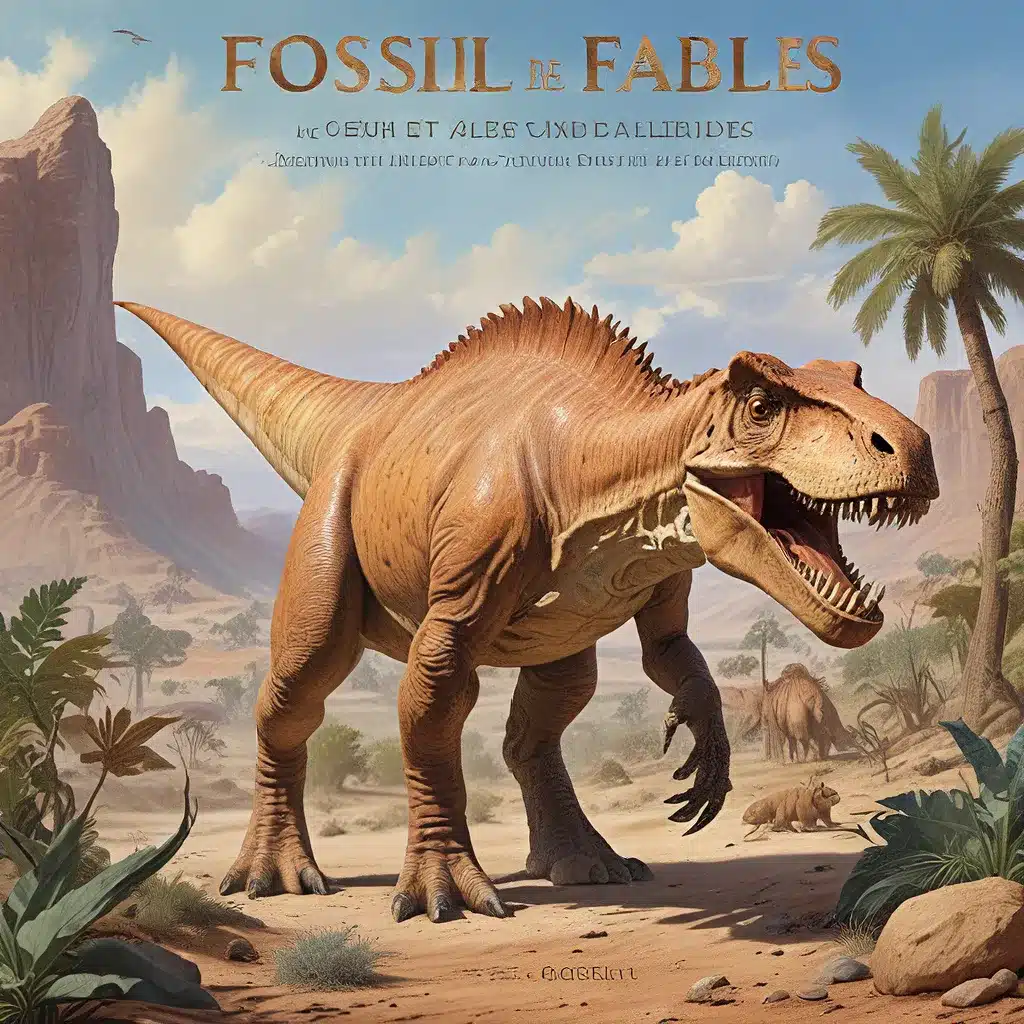
Uncovering the Hidden Histories of Native American Fossil Discoveries
Native Americans were the first to encounter the bizarre skeletons of extinct creatures buried in the earth, long before the arrival of European explorers and paleontologists. These fossils, weathering out of the ground, inspired a rich tapestry of oral traditions and legends that offer an alternative perspective on the interpretation of Earth’s ancient past.
For centuries, Native knowledge of fossils was largely overlooked or dismissed by the scientific establishment. However, a growing body of research is now shedding light on the sophisticated understanding of paleontology that existed within many indigenous cultures long before the rise of modern geology and paleontology.
Adrienne Mayor’s groundbreaking work has been instrumental in uncovering this hidden history, revealing how Native Americans not only observed and collected fossils but also wove them into their mythic narratives and cultural traditions. By examining these oral histories, we can gain a deeper appreciation for the ancient roots of paleontological thought and the diverse ways in which humans have grappled with the mysteries of the prehistoric world.
Fossils in the Landscape: Native American Observations and Collections
Native Americans had long been intimately familiar with the remarkable fossil evidence scattered throughout their ancestral lands, even before the arrival of European explorers and scientists. As Mayor notes, the Crow, Blackfeet, and Sioux were among the first to experience the “thrill of discovery” that later paleontologists would feel when unearthing the remains of dinosaurs and other extinct creatures.
These indigenous cultures did not simply stumble upon these fossils by chance; they actively observed, collected, and attempted to explain the meaning of the mysterious skeletons and petrified remains they encountered. Some fossils were even deliberately excavated to confirm or expand upon existing oral traditions and to obtain special materials for ceremonial use or personal amulets.
The Native American understanding of fossils was not merely a “diffuse awareness,” as some scholars have suggested. Rather, it reflected a coherent and sophisticated approach to interpreting the ancient history of the Earth and its lost inhabitants. Through careful observation, repeated encounters, and rational speculation, these pre-Darwinian cultures developed explanatory narratives that often anticipated or paralleled modern scientific theories about extinction and deep time.
Weaving Fossils into Myth and Legend
The fossils encountered by Native Americans were not merely viewed as curiosities or relics of the past; they were woven into the fabric of their cultural traditions and mythic narratives. These oral histories not only attempted to explain the origins and disappearance of the extinct creatures, but also imbued them with symbolic meaning and spiritual significance.
Many Native American cultures, such as the Crow, Blackfeet, and Sioux, associated fossil evidence with the remains of legendary creatures like the Thunder Birds and Water Monsters mentioned in their mythological stories. These narratives often reflected a sophisticated understanding of deep time and the succession of different faunas that had occupied the land over the course of Earth’s history.
Some cultures even identified certain fossil remains as the ancestors or relatives of living species, demonstrating a nuanced appreciation for the interconnectedness of all life on the planet.
The integration of fossils into Native American mythology and worldview underscores the depth and significance of their paleontological knowledge. These oral traditions were not merely fanciful tales, but rather coherent attempts to make sense of the remarkable evidence of extinct creatures that had once roamed their lands.
Tensions and Conflicts in the Preservation of Fossil Knowledge
Despite the rich and enduring fossil traditions of Native American cultures, this knowledge has often been overlooked, dismissed, or actively suppressed by the scientific establishment. As Mayor’s research reveals, prominent paleontologists like George Gaylord Simpson actively worked to discredit and marginalize the contributions of indigenous peoples to the field of paleontology.
This marginalization has deep historical roots, stemming from a long legacy of scientific exploitation and cultural appropriation of Native American knowledge and resources. Paleontologists have been complicit in this process, often removing significant fossil specimens from tribal lands without consent or compensation.
Moreover, Native American worldviews and cultural practices regarding the treatment of fossil remains have frequently clashed with the extractive and reductive approaches of Euro-American science. Traditional beliefs about the sanctity of the Earth and the interconnectedness of all life forms have often been dismissed as superstition or ignorance by Western scientific authorities.
These tensions and conflicts have persisted to the present day, as Native Americans continue to assert their rights and sovereignty over the fossil resources found within their ancestral lands. Navigating these complex cultural and legal issues will be crucial for fostering a more inclusive and respectful approach to paleontological research and heritage preservation in the future.
Reviving and Reclaiming the Fossil Traditions of the First Americans
In recent decades, there has been a growing movement to reclaim and revive the forgotten fossil traditions of Native American cultures. Scholars and indigenous advocates have been working to document and preserve these rich oral histories, challenging the longstanding dismissal of Native American paleontological knowledge by the scientific establishment.
This renewed interest in indigenous fossil traditions has the potential to transform our understanding of the deep history of life on Earth, as well as the diverse ways in which human cultures have engaged with the mysteries of the prehistoric world. By integrating Native American perspectives and knowledge into the field of paleontology, we can expand the boundaries of scientific inquiry and foster a more inclusive and holistic approach to exploring the ancient past.
As we continue to uncover the hidden histories of Native American fossil traditions, we may also find that these alternative narratives offer valuable insights and perspectives that can enrich and challenge our modern scientific understanding of the evolutionary history of life on our planet. The Lost Kingdoms welcomes this exciting and transformative exploration of the fossil fables and legends of the First Americans.


